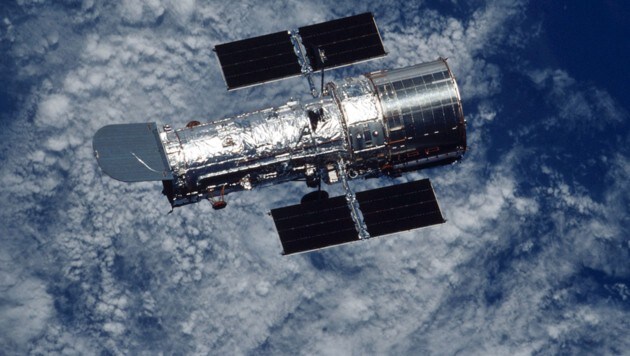Just over a week ago, the US Space Agency proudly presented the first images from its James Webb Space Telescope (JWST). As has now become known, its 25-square-meter mirror was damaged more than expected by an unexpectedly strong impact totaling six micrometeorites. Because each mirror segment can be adjusted individually, the damage caused could be largely offset, according to NASA.
A report published Tuesday shows that the micrometeorites caused more damage to the mirror than originally thought. NASA can only compensate for this damage and the associated somewhat poorer image data with the help of correction algorithms.
“The impact of a single micrometeorite, which occurred between May 22 and 24, exceeded the extent of damage expected before the launch of a single micrometeorite,” the report said. For the time being, however, the mirror could be adjusted in such a way that most negative effects on image quality could be compensated, according to the American space agency.
Impact strength underestimated in advance
Before the JWST launched, NASA scientists had assumed that the space observatory would encounter potentially dangerous micrometeorites only about once a month. Above all, the assumed strength of the expected effects turned out to be wrong. While five dealt only minor damage — as predicted — the sixth impact caused 120 times more damage than expected.
The James Webb Space Telescope is somewhat susceptible to damage due to its construction. Because unlike the “Hubble” telescope, whose primary mirror is housed in a cylindrical housing (pictured below), the JWST’s 18-segment, 25-square-meter mirror, which measures 6.5 meters in diameter, is completely exposed from space unprotected.
NASA is now considering how to reduce the risk of further damage from micrometeorite impacts. For example, by pointing the spacecraft in certain directions to minimize the chance of a collision. For example, by turning the gigantic mirror out of the flight direction of the observatory. Furthermore, the observatory performs well in space. “JWST’s scientific performance is almost always better than expected,” the NASA report said.
Also read:


What are micrometeorites?
Micrometeorites are small meteorites, usually a few hundred microns to a few millimeters in size. They usually consist of silicate minerals or a nickel-iron alloy. When they enter the Earth’s atmosphere, the frictional heat causes them to burn up like a so-called shooting star.
Impact strength underestimated in advance
Before the JWST launched, NASA scientists had assumed that the space observatory would encounter potentially dangerous micrometeorites only about once a month. Above all, the assumed strength of the expected effects turned out to be wrong. While five dealt only minor damage — as predicted — the sixth impact caused 120 times more damage than expected.
The James Webb Space Telescope is somewhat susceptible to damage due to its construction. Because unlike the “Hubble” telescope, whose primary mirror is housed in a cylindrical housing (pictured below), the JWST’s 18-segment, 25-square-meter mirror, which measures 6.5 meters in diameter, is completely exposed from space unprotected.
NASA is now considering how to reduce the risk of further damage from micrometeorite impacts. For example, by pointing the spacecraft in certain directions to minimize the chance of a collision. For example, by turning the gigantic mirror out of the flight direction of the observatory. Furthermore, the observatory performs well in space. “JWST’s scientific performance is almost always better than expected,” according to the NASA report.
Source: Krone
I’m Wayne Wickman, a professional journalist and author for Today Times Live. My specialty is covering global news and current events, offering readers a unique perspective on the world’s most pressing issues. I’m passionate about storytelling and helping people stay informed on the goings-on of our planet.




